
In 2022, world fisheries and aquaculture production reached 186 million tons of aquatic animals, and this is expected to increase an additional 10% to reach 205 million tons by 2032. Despite this increase, the rate and absolute level of growth are projected to decline compared with the 22% growth (33 million tons) achieved during the previous decade (2012 to 2022).
Most of the current decade (2022 to 2032) increase will come from aquaculture, expected to break the 100 million tons threshold for the first time in 2027, reaching 111 million tons in 2032, with an overall growth of 17% or nearly 16 million tons compared with 2022.
The continuous increase in aquaculture production projected over the period 2022 to 2032 will occur at an average annual growth rate of 1,6%, less than half the 4% rate observed in 2012 to 2022. This reduced growth rate will depend on several factors such as wider adoption and enforcement of environmental regulations; reduced availability of water (both quality and quantity) and suitable aquaculture sites; increasing impact of aquatic animal diseases in intensive aquaculture; and reduced productivity gains.
IMPACT OF POLICIES
Chinese policies are expected to account significantly for the overall reduced growth.
Initiated in 2016, these policies aim to continue integrating environmental considerations in aquaculture production to improve its sustainability by promoting the adoption of ecologically sound technological innovations and water recycling; not extending the areas dedicated to aquaculture; and reducing the use of antibiotics in production. All these actions will cause an initial capacity reduction, followed by faster growth.
This story is from the October 18, 2024 edition of Farmer's Weekly.
Start your 7-day Magzter GOLD free trial to access thousands of curated premium stories, and 9,000+ magazines and newspapers.
Already a subscriber ? Sign In
This story is from the October 18, 2024 edition of Farmer's Weekly.
Start your 7-day Magzter GOLD free trial to access thousands of curated premium stories, and 9,000+ magazines and newspapers.
Already a subscriber? Sign In

Learners prompted to consider agri careers
In late January, Eastern Cape MEC for Rural Development and Agrarian Reform Nonceba Kontsiwe launched a back-to-school campaign in the town of eMaxesibeni, part of the Alfred Nzo District Municipality.

Conservation collaboration transforms lives and catalyses meaningful change
The collaboration between the African Conservation Trust (ACT) and the Social Employment Fund (SEF) is not only transforming lives and landscapes, but is a catalyst for meaningful change.

Revised Network Statement shows clear intent to move agricultural products back to rail
POLICY PERSPECTIVE by Theo Boshoff

Protecting the world's forests
This excerpt of a report by the Food and Agriculture Organization of the United Nations provides projections on fuelwood and roundwood production, and offers some pragmatic solutions that are needed to protect the world’s forests, which are essential for the livelihoods of many people.
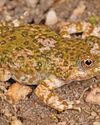
Cederberg frog discovery of 'extreme importance'
The identification of a new frog species, the Cederberg dainty frog (Cacosternum cederbergense), in South Africa in late 2024 is of the utmost importance for the preservation of biodiversity. This was according to herpetologist Tyrone Ping.
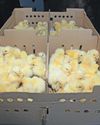
Farmers warned to look out for fraudsters and deals that seem too good to be true
Fraud happens everywhere, even in the agriculture sector, where many negotiations rely on relationships and goodwill. Glenneis Kriel reports on the situation and how to safeguard yourself against such crimes.
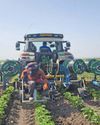
Addressing water scarcity and other agri issues through innovative irrigation
Smart irrigation helps address the challenges of water scarcity and unpredictable weather, and promotes operational efficiency, writes Eran Ossmy, president of Rivulis’ Micro Irrigation Division.
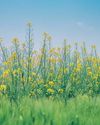
Canadian farmers expected to face trade challenges in 2025
Possible tariffs on Canadian agricultural exports have been a source of anxiety for the country since the new US government under President Donald Trump came into power in late January.
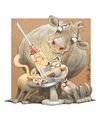
Vaccines are one of the most effective ways to combat diseases in animals
When it comes to protecting your animals’ health, vaccination stands out as one of the most crucial and effective preventive measures available, writes Boehringer Ingelheim’s Dr Michelle Enslin.

New year starts with a volatile veg market
This analysis by Absa AgriBusiness outlines market trends, highlighting the factors shaping each vegetable category's performance.